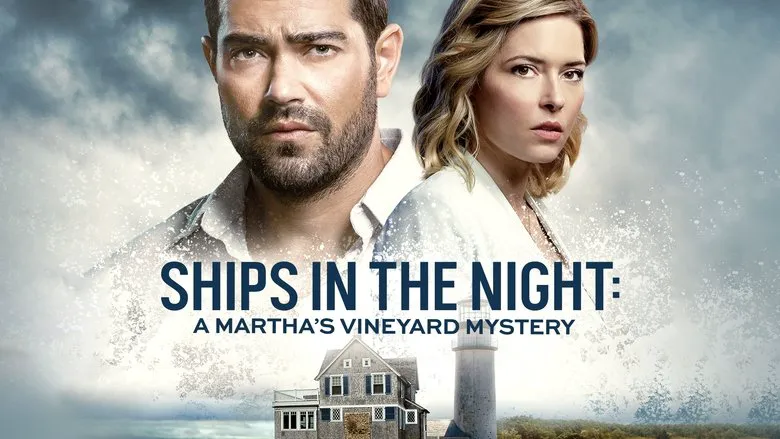A classic suspense film transcends the mere presence of an unexpected twist ending. Its enduring power lies in the masterful orchestration of tension, the subtle yet profound performances of its actors, and the creation of an atmosphere so palpable it practically hums with unease.
The true brilliance of a great suspense film often unveils itself most richly upon a second viewing. This allows cinephiles to peel back the layers, noticing the meticulous breadcrumbs, the directorial sleights of hand, and the foreshadowing that went unnoticed during the initial adrenaline-fueled watch. It’s in these repeated viewings that one truly comes to appreciate the filmmaker’s ingenious touch in weaving a narrative that deceives, thrills, and ultimately, reveals a deeper truth.
This exploration delves into a selection of quintessential suspense films that have redefined the genre, each offering a unique journey into the heart of mystery and psychological intrigue. They are presented here in no particular order, each deserving its place in the pantheon of cinematic suspense.
Essential Suspense Films That Demand Your Attention
The Sixth Sense
 Alt Text: A young Cole Sear, wrapped in a blanket, looking fearful in a dimly lit bedroom in The Sixth Sense.
Alt Text: A young Cole Sear, wrapped in a blanket, looking fearful in a dimly lit bedroom in The Sixth Sense.
“I see dead people.” This indelible line, delivered with a mix of raw vulnerability and unsettling conviction, solidified a young Haley Joel Osment in cinematic history. More than just a memorable quote, it’s the very utterance that orchestrates the dramatic reversal in the film’s climax, elevating the entire movie from a compelling ghost story to a profound psychological thriller. For many, The Sixth Sense served as an electrifying introduction to the world of suspense, a gateway film that forever shifted their perception of narrative possibilities. Just when an audience believes they’ve deciphered its intricate puzzle, the final reveal strikes with the force of a thunderclap, leaving viewers utterly disarmed and compelled to re-evaluate every preceding scene.
Saw
 Alt Text: The menacing Jigsaw puppet from the Saw film series, illuminated by a faint light.
Alt Text: The menacing Jigsaw puppet from the Saw film series, illuminated by a faint light.
While the Saw franchise is notoriously associated with its visceral gore and disturbing themes, which might deter some viewers, to overlook its foundational suspense would be a grave mistake. Beneath the explicit violence lies one of the most intricately constructed and brilliantly conceived suspense sagas ever committed to film. Each installment is designed with a mind-bending conclusion, with the original Saw and Saw IV often cited as particularly groundbreaking for their shocking revelations. For those with the patience and fortitude to embark on a journey through all seven films, the sheer genius of their interconnectedness, the sprawling, meticulously planned narrative web, becomes astoundingly clear in retrospect. It’s an intellectual dark maze as much as a visual one.
The Butterfly Effect
 Alt Text: Ashton Kutcher as Evan Treborn, with a look of existential dread, from The Butterfly Effect.
Alt Text: Ashton Kutcher as Evan Treborn, with a look of existential dread, from The Butterfly Effect.
This series of films explores a concept that has captivated humanity for centuries: the tantalizing, yet ultimately dangerous, illusion of altering the fabric of established reality. What if one could pinpoint a precise moment in their past, rewind time, and rewrite a single choice, believing it would improve the future? Sci-fi enthusiasts typically associate time travel with thrilling adventures and escapist fantasies. However, The Butterfly Effect eschews such saccharine notions, instead plunging deep into the unforgiving repercussions inherent in tampering with causality. It offers no easy solace, only the harsh, often tragic, realities of how every action, no matter how small, sends ripples through time, leading to unforeseen and often devastating consequences. It’s a sobering meditation on fate and free will.
Triangle
 Alt Text: A group of individuals on a deserted, ominous ship deck, enshrouded in fog, from the film Triangle.
Alt Text: A group of individuals on a deserted, ominous ship deck, enshrouded in fog, from the film Triangle.
Even a static image from Triangle is often enough to pique the most jaded viewer’s interest. This film masterfully weaves a narrative around the intricate concepts of recursion and, some might argue, reincarnation within a relentless time loop. The director’s vision is nothing short of astounding, creating a nightmare logic that is both disorienting and utterly compelling. Those who have experienced its mesmerizing grip often recount the chilling, symbolic significance of seemingly minor details, like the crow near the film’s conclusion. It leaves an inescapable impression of an unyielding, preordained fate – a cyclical entrapment where every end is merely a new beginning, trapping its characters in an eternal, inescapable loop.
Fight Club
 Alt Text: Brad Pitt’s character, Tyler Durden, smoking a cigarette with a chaotic background from Fight Club.
Alt Text: Brad Pitt’s character, Tyler Durden, smoking a cigarette with a chaotic background from Fight Club.
Brad Pitt’s career boasts a formidable filmography, with Se7en, Inglourious Basterds, and Fight Club standing out as monumental achievements. Yet, Fight Club, despite its critical acclaim and eventual cult status, was initially overlooked by a broad audience, perhaps hindered by what some perceived as a misleading or uninspired title. Nevertheless, it’s a magnificent cinematic experience that delves into profound themes of consumerism, masculinity, and identity. As the drudgery of modern life suffocates the spirit, the film poses a challenging question: would one be willing to strip away everything, to embrace nihilism and self-destruction, purely for the ephemeral promise of liberation and perhaps, greatness? The film’s conclusion is both radically unexpected and spectacularly executed, culminating in a final shot that is nothing short of iconic and deeply resonant.
Primal Fear
 Alt Text: Edward Norton as Aaron Stampler, staring intensely with a seemingly innocent, yet unsettling, expression from Primal Fear.
Alt Text: Edward Norton as Aaron Stampler, staring intensely with a seemingly innocent, yet unsettling, expression from Primal Fear.
While Fight Club arguably represents a dual triumph for both Brad Pitt and Edward Norton, Primal Fear stands as an electrifying debut for Norton, almost entirely carried by his mesmerizing solo performance. Stepping into the challenging role of Aaron Stampler, Norton delivers a portrayal of such astounding depth and complexity that it leaves audiences questioning the very nature of innocence and evil. What kind of chilling, manipulative monster lurks within the seemingly guileless smile of this young man? And, more profoundly, who exactly is the true architect of the chaos and deception that unfolds? The film cleverly plays with audience perception, twisting conventions of courtroom drama and psychological thriller with a final, devastating reveal.
Shutter Island
Alt Text: A lighthouse casting eerie shadows on a rocky Shutter Island coastline, a recurring motif in the film.
Shutter Island is a cinematic paradox: a single film that unfolds as two entirely distinct narratives, depending on the perspective from which it is viewed. Director Martin Scorsese brilliantly constructs these dual realities, allowing them to coexist and meticulously interweave throughout the film, blurring the lines between sanity and madness, truth and delusion. The genius lies in how seamlessly the shifts occur, leaving viewers constantly questioning what is real and what is fabricated. The film’s indelible closing line, “Which would be worse – to live as a monster, or to die as a good man?” embodies the profound, philosophical dilemma at its heart, resonating long after the credits roll and prompting intense deliberation over its ambiguities.
Memento
Alt Text: Leonard, the protagonist of Memento, looking intensely at a tattooed phrase on his arm.
Christopher Nolan’s Memento is a groundbreaking piece of narrative architecture, unfolding almost entirely in reverse chronological order. This daring structural choice isn’t a mere gimmick; it thrusts the audience directly into the disorienting, fractured reality of its protagonist, Leonard Shelby, a man afflicted with anterograde amnesia, unable to form new memories. The entire film charts his relentless, tattoo-laden journey for revenge against the person who murdered his wife. As the fragmented pieces of his quest are revealed backward, compelling questions arise: Will Leonard ever achieve his vengeance? And who is the true killer, if his own memory cannot be trusted? The film’s shattering conclusion doesn’t just reveal a twist; it fundamentally pulverizes and reconfigures every assumption the audience has made.
The Silence of the Lambs
Alt Text: A close-up of Hannibal Lecter’s face, staring intently, from The Silence of the Lambs.
While its genre elements cross into crime thrillers and psychological horror, The Silence of the Lambs undeniably weaves a web of suspense that is undeniably a classic and absolute must-see. Within the genre, fans often draw intriguing parallels between the infamous Hannibal Lecter and Saw’s Jigsaw. Both are figures of immense intellectual prowess and ruthless cunning; both exude a chilling composure beneath their horrifying acts. Their inner worlds are unfathomably complex, holding both depravation and, at times, a strange, twisted morality. The film invites deep introspection into Lecter’s character: how does one reconcile his shocking cruelty with moments of profound, unsettling humility, or even a perverse sort of warmth towards Clarice Starling?
The Usual Suspects
Alt Text: Keyser Söze, the mysterious mastermind, walking with a distinct limp from The Usual Suspects.
Few, if any, films have harnessed the power of a twist ending with the seismic impact of The Usual Suspects. The meticulously constructed narrative expertly guides the audience, and the investigating detective, towards a seemingly definitive conclusion, with all circumstantial evidence pointing towards a particular individual. However, the film then unleashes a final, breathtaking revelation that utterly dismantles every preconceived notion. The gradual dawning of realization for both the audience and the police in the final moments is a cinematic masterclass. It culminates in an unforgettable, chilling final line—“And like that, he is gone”—which has since become an iconic reference point for perfectly executed cinematic deception, cementing its place as a genre benchmark for unexpected master deception.